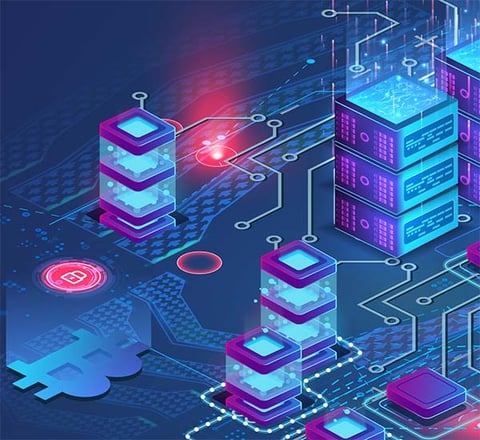Raw Blockchain Data Transformed Into Actionable Information
On-chain data is key to gaining visibility into network fundamentals, DEX transactions, and account balances/activities. Blockchain data analysis is essential for this. Because blockchain technology is so complex, developing investment strategies, managing risk, and maintaining regulatory compliance is impossible without this data.
Amberdata accesses raw on-chain data from all the blockchain networks that matter and produces comprehensive, granular, and unfiltered data sets usable for making investment decisions.
Key Features: Raw Network Data
Get visibility and full history into fundamental L1 and L2 blockchain activities, transactions, and metrics using our advanced blockchain data analytics.
“Amberdata is the only source of high-quality, comprehensive data providing transparency, price discovery, and the data required for regulated firms to maintain compliance and stay relevant as customers demand access to digital assets.”
CEO | DeFi Protocol
Actionable Blockchain Data Analytics
Blockchain Data Use Cases
Build On-Chain Applications
-
Build decentralized applications (dApps) to allow users to interact with the blockchain directly from front-end interfaces.
-
Write smart contracts to verify the collateralization of assets or automatically execute trades.
-
Use RPC to send messages directly to the blockchain.
Research Networks and Fees
-
Analyze historical blockchain data to identify patterns in network congestion and peak usage times.
-
Optimize transaction fees and estimate confirmation times.
-
Correlate the impact of external events or new tokens with a network's performance.
Remain Compliant
-
Correlate addresses with real-world entities for compliance, anti-money laundering (AML) measures, and investor transparency.
-
Identify addresses holding specific tokens.
-
Understand how assets are distributed through wallets or blockchain networks.
Analyze Fund Movement
-
Visualize the flow of funds within a blockchain network.
-
See asset movement between wallet addresses and exchanges.
-
Investigate stablecoin mints and burns in a decentralized network.
Monitor Blockchain Activity
-
Analyze the transactions, smart contracts, and overall health of a blockchain network.
-
Detect fraudulent or suspicious transactions and identify potential security threats.
-
Track large token holders (whales) or specific assets.
Build On-Chain Applications
-
Build decentralized applications (dApps) to allow users to interact with the blockchain directly from front-end interfaces.
-
Write smart contracts to verify the collateralization of assets or automatically execute trades.
-
Use RPC to send messages directly to the blockchain.
Research Networks and Fees
-
Analyze historical blockchain data to identify patterns in network congestion and peak usage times.
-
Optimize transaction fees and estimate confirmation times.
-
Correlate the impact of external events or new tokens with a network's performance.
Remain Compliant
-
Correlate addresses with real-world entities for compliance, anti-money laundering (AML) measures, and investor transparency.
-
Identify addresses holding specific tokens.
-
Understand how assets are distributed through wallets or blockchain networks.
Analyze Fund Movement
-
Visualize the flow of funds within a blockchain network.
-
See asset movement between wallet addresses and exchanges.
-
Investigate stablecoin mints and burns in a decentralized network.
Monitor Blockchain Activity
-
Analyze the transactions, smart contracts, and overall health of a blockchain network.
-
Detect fraudulent or suspicious transactions and identify potential security threats.
-
Track large token holders (whales) or specific assets.


.png?width=900&height=754&name=on%20chain%20data%20(1).png)
.png?width=850&height=532&name=Analytics%20(940%20x%20588%20px).png)















